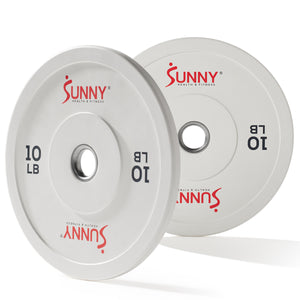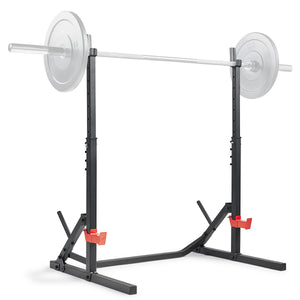With the new year ahead, there is no time like the present to start integrating new, healthy habits into your routine! What if I told you there was a way to build muscle, decrease fat mass, improve your metabolism, increase cognitive and physical abilities, and improve your self-esteem? Well, I am pleased to share that these are all outcomes of implementing strength training into your routine. These results can be experienced as early as 10 weeks into a training program!(1) Additionally, strength training can be especially beneficial to older adults, as it can lead to increases in bone density, functional capacity, and decreased risk of falls. (2)
Whether you’re just getting started with strength training or have been doing it for years, it is essential to develop and refine a strong foundation by prioritizing exercise form and movement mechanics. It’s not just what you are doing, but also how you are doing it. Focusing on proper technique while strength training will not only minimize the risk of injury, but it will also ensure better results – allowing you to safely implement progressive overload to build strength and lean muscle mass.
Let’s work from the ground up to ensure you are crushing your workouts with proper form through the year ahead and beyond!
Feet
Very few people today have what is classified as a medically “ideal foot,” with natural proper weight distribution, arch shape, and range of motion at the ankle (subtalar) joint. (3) Many people have a natural inclination to either pronate, or “roll in,” on their arch or supinate the arch by “rolling out” on the foot. Because of this, it is crucial to be mindful of our foot mechanics when setting up for movement.
Coach’s Cues
- Imagine your foot is a tripod; you are connecting with the floor and evenly distributing your weight between your big toe, pinky toe, and heel.
- For most strength training exercises, we want to think about digging the heels into the floor when coming up from a squat, deadlift, lunge, or even when doing upper body movements in a standing position like an overhead press or bicep curls. For many, the natural inclination is to rock forward onto the toes, so taking a second to ground into the floor by rooting through the heels will help increase stability and muscular output while strength training.
Knees
In any movement where the knees are moving into flexion (bending), it is important to be mindful of how they are tracking over the foot. Most people have a natural inclination towards either caving the knees in (valgus) or knocking them too far out towards the outside of the feet (varus). Both of these can present problems, so it is important to find a happy medium between the two and ideally have the knees track right over the center of the foot.(4)
Coach’s Cues
- For knee valgus (knees caving in)
- Think about creating space between your knees as they bend
- Think about moving your knees out toward your pinky toe
- For knee varus (knees too far apart)
- Imagine you are squeezing a balloon between your knees as they bend
- Think about moving your knees in toward your big toe
Hips
The hip joint can create a plethora of problems for people as it connects the lower body to the spine. The most common imbalances in the hips and pelvis are an anterior or posterior pelvic tilt, or an unlevel pelvis resulting in a tilt right or left in the frontal plane.(5) We want to think about maintaining a neutral pelvis through all movement as it can impact not only the legs but also the spine.
Coach’s Cues
- For anterior pelvic tilt
- Think about slightly tucking the pelvis underneath your spine
- Think about lengthening your spine through your tailbone by engaging your core and lessening the curvature (sway) in your lower back (lumbar spine)
- For posterior pelvic tilt
- Think about shifting your hips back and out slightly
- Think about lengthening your spine through your tailbone by engaging your core and increasing the curvature (sway) of your lower back (lumbar spine)
- For unlevel pelvis in lunges and other unilateral (single side) movements
- Think about dropping the hip of the working leg down so the pelvis stays level and balanced
- Think about “squaring off” the hips- make sure one hip bone is not further forward than the other
- Think of your pelvis, or “hip bones,” like headlights – they should always be pointing in the same direction at the same time
Spine
There are a multitude of postural irregularities that can occur in the spine, and it is arguably one of the riskiest structures in the body to injure. While training, it is important to use the musculature of the core and back to help support the structure of the spine. The spine is curved naturally – starting at the top with a cervical lordosis (neck), moving down to the thoracic kyphosis (upper-mid back), and finishing with a lumbar lordosis (low back). It is important to maintain the integrity of these curves and to keep the spine neutral through movement. Again, this is most effectively achieved through supporting with the core.(6)
Coach’s Cues
- Imagine that you are knitting your core together
- Think about closing your rib cage – this tends to flare open when paid no mind
- To engage your core, think about pulling your belly button towards your spine. Or a more gruesome thought although helpful, imagine that you have been punched in the gut – find that activation and hold onto it throughout the exercise
- Think about creating space between your vertebrae
Shoulders and Scapula
The most common tendency with the shoulders is a forward roll, or hunch up towards the ears during movement. This is usually due to lengthened and weakened muscles in the chest, shoulders, and upper back. During movement, think about keeping your shoulders and scapulae (shoulder blades) connected to the rest of your torso.(7)
Coach’s Cues
- Squeeze your shoulder blades together
- Roll your shoulders back and down
- Press your shoulders down away from your ears
Head and Neck
The most common postural irregularity with the head and neck (which make up the cervical spine) is forward head posture (FHP). This is caused by excessive flexion of the neck and head that causes the entire rest of the spine to be imbalanced as a result. When strength training, it is important to make sure the neck and head are properly stacked on top of the rest of the spine, following the natural cervical lordosis curve.
Coach’s Cues
- Pull your head back over your spine
- Think of giving yourself a “double chin”
- Lift your chin
Breath
Although this is something we do naturally without thinking about it, being intentional about your breath while strength training can make a world of difference. Not only will it ensure your muscles are getting the fresh oxygen they need to safely and effectively lengthen and contract, but it can also help you move heavy amounts of weight more efficiently.(8)
Coach’s Cue
- Next time you are squatting, think about inhaling as you lower down, and exhaling as you push the floor away. This will recruit your core muscles to help support you through the lift, and ensure you are breathing deeply and consistently throughout your workout.
Range of Motion
While strength training, make sure you are training through your body’s full range of motion (ROM) in a given movement pattern. While certain exercises may isolate just one part of your ROM, it is important to make sure to include a variety of movements that train the body in all planes and ranges.
Coach’s Cue
- For Squats – place a box or a bench a few inches behind you. Lower down until you feel your hips hit the surface before driving back up to standing
Finally…
For many of these, especially if you are a beginner, it is hard to know what your natural inclinations are in terms of form, and which of these cues apply to you. I would highly recommend working with a Personal Trainer or finding a strength training-focused group fitness class with a qualified instructor who can let you know which aspects of your form could use some improvement.
You will get so much more out of your strength training when you are mindful of your movement patterns, breath support, and range of motion. Find the cues that are helpful and applicable to you, and start reaping the benefits of safe, efficient, and intentional training!
*If you want more “Coach’s Cues” like the ones in this article, come train with me, Mara Magistad, on the SunnyFit® app and YouTube channel!*
1. Westcott, W. L. (2012). Resistance Training is Medicine. Current Sports Medicine Reports, 11(4), 209–216. https://doi.org/10.1249/jsr.0b013e31825dabb8. Accessed 9 January 2024.
2. López, P., Pinto, R. S., Radaelli, R., Rech, A., Grazioli, R., Izquierdo, M., & Cadore, E. L. (2017). Benefits of resistance training in physically frail elderly: a systematic review. Aging Clinical and Experimental Research, 30(8), 889–899. https://doi.org/10.1007/s40520-017-0863-z. Accessed 9 January 2024.
3. Åström, M., & Arvidson, T. (1995). Alignment and joint motion in the normal foot. Journal of Orthopaedic & Sports Physical Therapy, 22(5), 216–222. https://doi.org/10.2519/jospt.1995.22.5.216. Accessed 9 January 2024.
4. Sharma, L., Song, J., Felson, D. T., Cahue, S., Shamiyeh, E., & Dunlop, D. D. (2001). The role of knee alignment in disease progression and functional decline in knee osteoarthritis. JAMA, 286(2), 188. https://doi.org/10.1001/jama.286.2.188. Accessed 9 January 2024.
5. Diebo, B. G., Varghese, J., Lafage, R., Schwab, F. J., & Lafage, V. (2015). Sagittal alignment of the spine: What do you need to know? Clinical Neurology and Neurosurgery, 139, 295–301. https://doi.org/10.1016/j.clineuro.2015.10.024. Accessed 9 January 2024.
6. Çelenay, Ş. T., & Kaya, D. Ö. (2017). An 8-week thoracic spine stabilization exercise program improves postural back pain, spine alignment, postural sway, and core endurance in university students: a randomized controlled study. Turkish Journal of Medical Sciences, 47, 504–513. https://doi.org/10.3906/sag-1511-155. Accessed 9 January 2024.
7. Singla, D., & Veqar, Z. (2017). Association between forward head, rounded shoulders, and increased thoracic Kyphosis: A review of the literature. Journal of Chiropractic Medicine, 16(3), 220–229. https://doi.org/10.1016/j.jcm.2017.03.004. Accessed 9 January 2024.
8. Weight training: Do’s and don’ts of proper technique. (2022, November 29). Mayo Clinic. https://www.mayoclinic.org/healthy-lifestyle/fitness/in-depth/weight-training/art-20045842. Accessed 9 January 2024.


Related Articles




























Add Your Name & Email
Please enter your name and email to continue.We won’t display your email publicly.